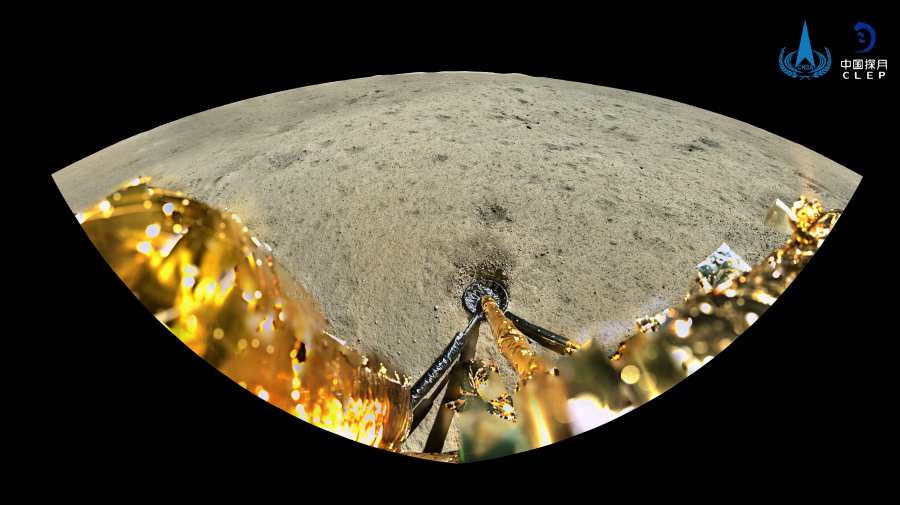![]() This undated handout photo taken by the China National Space Administration (CNSA) and released on June 4, 2024 shows a general view of of the surface of the Moon, which was shot by the panoramic camera attached to the Chang’e-6 lunar probe before it started collecting samples [Handout/China National Space Administration.
This undated handout photo taken by the China National Space Administration (CNSA) and released on June 4, 2024 shows a general view of of the surface of the Moon, which was shot by the panoramic camera attached to the Chang’e-6 lunar probe before it started collecting samples [Handout/China National Space Administration.
Tue 04 June 2024:
A Chinese spacecraft, the Chang’e-6 probe, has successfully launched from the far side of the Moon carrying rock and soil samples, marking a world-first achievement in lunar exploration, as reported by state media. The ascent from the lunar surface began at 7:38am local time on Tuesday, with the spacecraft entering a preset orbit.
Launched last month, the Chang’e-6 lander touched down on the Moon’s far side on Sunday, utilizing a drill and robotic arm to collect samples. This mission represents a significant milestone in China’s space program, which aims to send a crewed mission to the Moon by 2030.
The ascender of China’s Chang’e-6 probe lifted off from lunar surface on Tuesday morning, carrying samples collected from the moon’s far side, an unprecedented feat in human lunar exploration history. #GLOBALink pic.twitter.com/jO1tqOchR2
— China Xinhua News (@XHNews) June 4, 2024
The samples will be transferred to a reentry capsule, expected to return to Earth around June 25, landing in China’s Inner Mongolia region. The mission’s landing site, the South Pole-Aitken Basin, is one of the Moon’s oldest and largest impact craters, potentially offering insights into the early solar system.
The spacecraft finished its intelligent and rapid sampling work, and the samples were stowed in a container inside the ascender of the probe as planned, the CNSA said.
During sampling and packaging, researchers conducted simulated sampling in a ground lab, based on the detection data sent back by the Queqiao-2 relay satellite, providing important support for decision-making and operations in every link.
“The mission has withstood the test of high temperature on the far side of the moon,” the CNSA said.
It adopted two methods of moon sampling, including using a drill to collect subsurface samples and grabbing samples on the surface with a robotic arm. It automatically gathered diverse samples at different sites.
Ge Ping, spokesperson for the Chang’e-6 mission, said that through detailed analysis of the soil structure, physical properties and material composition of the Chang’e-6 samples, scientists will be able to deepen research on the formation and evolutionary history of the moon, the origin of the solar system and so on, laying an improved foundation for later exploration missions to build on.
This mission, part of the Chang’e Moon exploration program, follows the successful Chang’e-5 mission in 2020, which collected samples from the Moon’s near side. China’s advancements in space, including the Tiangong space station, underscore its growing rivalry with the United States and other nations in space exploration. China aims to place astronauts on the Moon by 2030, following in the footsteps of the US.
SOURCE: INDEPENDENT PRESS AND NEWS AGENCIES
______________________________________________________________
FOLLOW INDEPENDENT PRESS:
WhatsApp CHANNEL
https://whatsapp.com/channel/0029VaAtNxX8fewmiFmN7N22
![]()
TWITTER (CLICK HERE)
https://twitter.com/IpIndependent
FACEBOOK (CLICK HERE)
https://web.facebook.com/ipindependent
YOUTUBE (CLICK HERE)
https://www.youtube.com/@ipindependent
Think your friends would be interested? Share this story!





